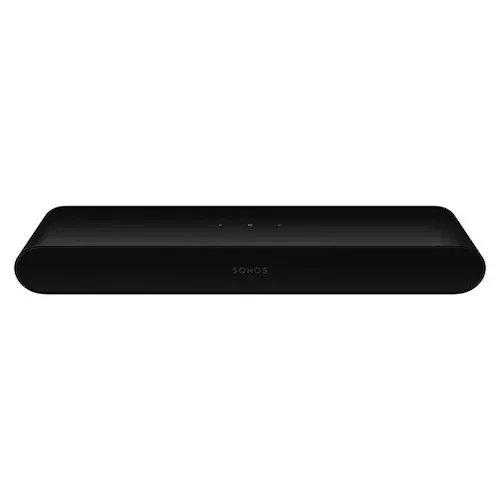Sonos Ray review: A budget soundbar worth listening to
Summary
Quick verdict: Finally, a budget soundbar that doesn’t suck.
- Cheap
- Small
- Sounds good
- Has Wi-Fi audio
- Can be a part of your multi-room Sonos system
- Doesn’t have Dolby Atmos
- Isn’t as good as the built-in speakers in highly expensive TVs
Sonos' latest soundbar offering is a bit of a departure from the premium speakers we're used to from the company. The Sonos Ray is small and adorable, designed for those who want better audio without breaking the budget.
Most soundbars under $500 are garbage. It's depressing because that's a lot of money. But the reason you get a soundbar is that the sound coming from your TV lacks bass or clarity. Many budget soundbars also lack those things.
What sets the Sonos Ray apart is that it actually sounds good and can be more than just a soundbar. While it certainly doesn't have the oomph of the more expensive Sonos Beam or Arc bars, it's just right for smaller rooms or more budget set-ups.
Sonos Ray design
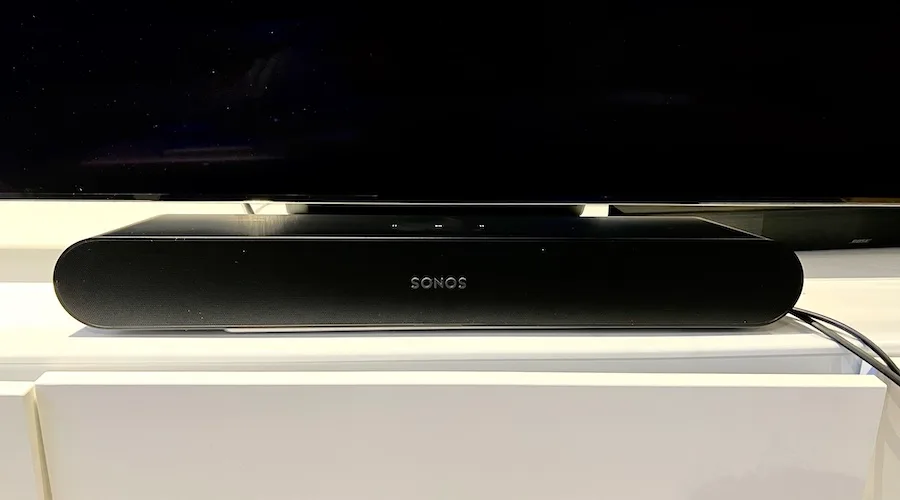
Image: Alice Clarke/Finder
The design is probably the smartest thing about this. It's all about the psychoacoustics with soundbars: tricking your brain into thinking the voices are coming from the characters' mouths and the footsteps are really behind you instead of from a plastic bar below the TV.
Getting a speaker to do that involves engineers using a bunch of maths to work out the angles of the physical object. It also employs the Sonos app to tune it for Trueplay so it knows how to negotiate the weird echo from your coffee table.
Because it's a compact, more budget product, there wasn't a lot of room for the designers to work with. Nor could they use a bunch of different materials on the housing to create the sound stage. So, we've got kind of a long, attractive wedge that slightly defies the laws of physics.
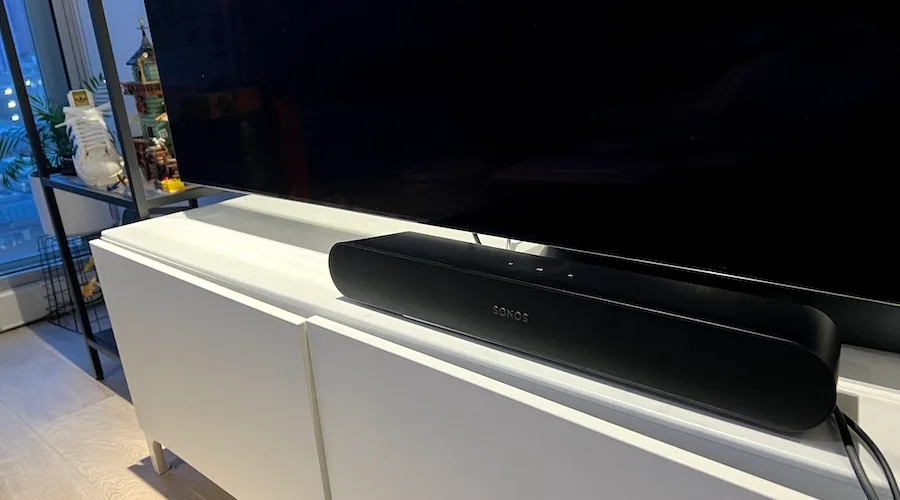
Image: Alice Clarke/Finder
While some soundbars need to be put on display because of their upward-firing speakers, the Ray is just a 3.0 soundbar. Its diminutive size means it'll fit nicely tucked away at the top of an Ikea entertainment unit, out of the way. You could also wall-mount it because the thing is tiny and light, so it'd be easy to do.
A lot of soundbars these days use HDMI ARC, which is great if they have Dolby Atmos or Spatial audio compatibility. However, it does use one of your HDMI ports on your TV and older TVs won't be able to make the most of it. The Ray doesn't have Atmos because it doesn't need it, so it also doesn't have HDMI, relying on optical which is far more universal. That means it should connect to almost any TV made in the last 20 years.
The optical cable also makes it an extremely easy set-up. It's great for those who might be nervous about complicating their existing home entertainment system. If your TV uses an IR remote (and almost all of them do), then it'll control the Ray too. You don't need to worry about an extra remote.
It's not an overwhelmingly beautiful, luxury object, but it is a good-looking soundbar using clever, functional design to sound good in a small space, and that's really what you want.
Sonos Ray performance
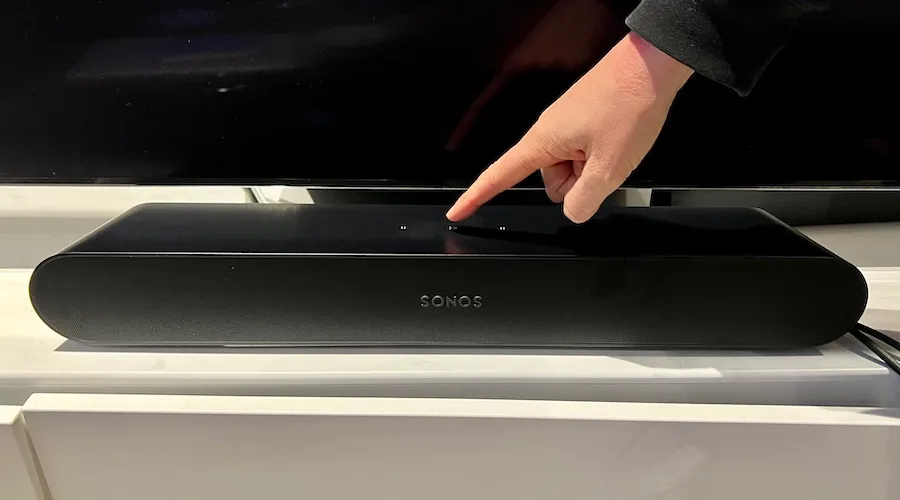
Image: Alice Clarke/Finder
The thing TV speakers fail at, particularly in budget and mid-tier TVs, is getting the voice clear. That's because a thin TV just doesn't have the space for the bass to reverberate and the speakers fire at the wall so you're just hearing a reflection. Most people buy a soundbar so they can hear the dialogue better first, with a bonus of cooler explosions.
That's why the designers of the Ray focused on dialogue clarity and they've really nailed it. Whether I'm watching the basketball, Heartstopper, the news, Stranger Things, Gentlemen Jack or Love, Victor, the dialogue or commentary is clean, crisp and clear, much more so than on the built-in speakers of my Samsung QN95a TV.
With explosions and action in shows such as Legends of Tomorrow and Stranger Things, the bass is much stronger than I ever would have expected from a soundbar this small, but it can't hold a candle to a proper subwoofer.
The reason you get a Sonos over a different brand though is that they're so modular and are more than just a soundbar. Other brands might give you Bluetooth connectivity or perhaps AirPlay so you can use the bar as a music speaker when the TV is off, but it's not the same as that proper Wi-Fi, multi-room audio experience you get from Sonos.
You can start with a Ray and then later get a Sonos One for the bedroom or office and start enjoying multi-room audio. Or maybe you have an Arc for the living room and are adding a Ray for the bedroom or playroom TV. Plus, down the line if you decide you want to get rear speakers or add a subwoofer to the Ray, you easily can without cursing the fact that the one compatible product was only available for a year. You could add Ones as rears and a sub, but at this price you would be better off looking at the Ikea Sonos speaker range (about half the price of a One) and waiting for the cheaper sub that's supposedly coming out later this year.
I am an audio nerd and snob. But I also don't have a lazy $20k–$100k to spend on the speakers of my dreams, so I've spent the last 10 years building up a Sonos system with speakers in every room because Sonos speakers always sound good and seemingly last forever. I change my favourite headphones every few months, but I'm still using the Sonos speakers I got for my birthday a decade ago. What I'm saying is that Sonos products are made to last and be part of an ecosystem. I see no reason why the Ray doesn't fit into that category.
The Ray handles music quite admirably but wobbles more than it does on TV audio.
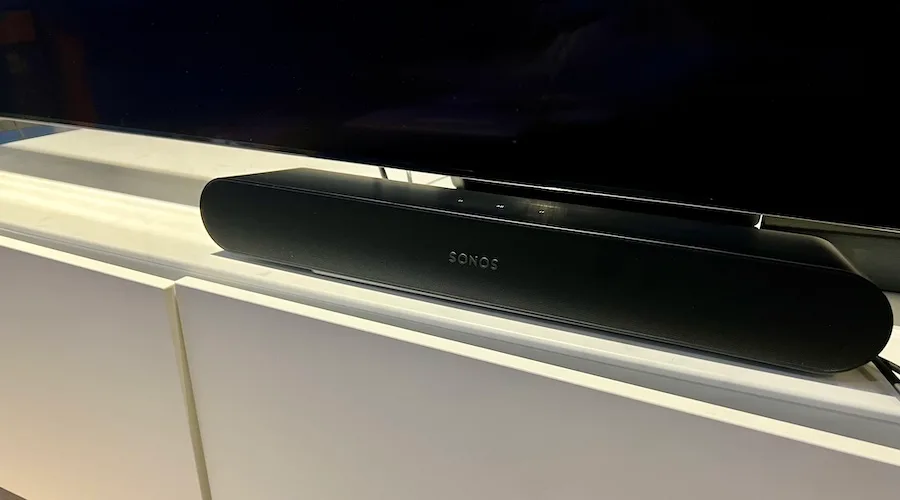
Image: Alice Clarke/Finder
Line of Sight by ODESZA has surprisingly good bass and space on the Ray. The quality it has is more like it's being played in a concert hall rather than the studio. It is missing some details, certainly in the higher tones. It's quite a delicate song, but those fragile edges get lost among the strong bass and mid-tones. It doesn't sound muddy, it's just that if you know the song, there's a bit missing.
Because of that lack of higher tones, Swan Lake Op. 20 by the London Symphony Orchestra is missing all the higher edges that make it magical. The lack of that higher register made it sound a bit flat and lifeless. This is not a speaker for classical music fans.
On the other hand, Gay4Me by G Flip sounds most excellent. It's a gravelly, bassy song that isn't built on subtlety by any definition. The drum fills after the bridge sound particularly impressive. You can almost follow the sticks' journey around the kit and see the layers of wood on the shell – it sounds that real.
The Ray is obviously tuned more for dialogue and TV audio, so it's a different listening experience to, say, the One for music. But for under $400, you're not going to find anything this adaptable.
For the bar's intended purpose – movies – the news is better.
The first 10 minutes of the film Gravity is a great test for surround sound because the astronauts' voices follow the actors rather than being tied to the centre channel. The scene becomes incredibly tense almost entirely through audio cues.
Because the Ray is a 3.0 bar rather than Atmos or true surround, you obviously won't get the full effect. However, the voices did travel more than I expected, with clear definition between the left and right. That's impressive given how small the thing is. I'm also pleased to report that the scene is stressful as hell because the audio is so effective. Most of the big sounds in movies and TV rely on bass, and the Ray is good at that.
In contrast, the opening of Pride and Prejudice (2005) is serenely gorgeous. It's the combination of the insects buzzing, distant farm animals, Lizzie's soft footsteps and the giggling sisters that bring us into the world, along with Dario Marianelli's brilliant soundtrack. You do have to really crank up the volume to get the full experience and some of the higher registers are missing, but it's much more effective than I dared hope from this soundbar, massively outperforming my expectations.
If you're used to regular TV speakers, the Sonos ray will sound like a revelation.
Should you buy it?
- Buy it if you want a budget soundbar that will last.
- Don't buy it if your budget will stretch to one of the other Sonos soundbars.
If you're in the market for a budget soundbar, or a soundbar for somewhere like a bedroom, then I wholeheartedly recommend the Sonos Ray. Even taking the Sonos compatibility out of the equation, this is just a good, compact soundbar that won't break the budget.
But with the Sonos compatibility and adding it to an existing Sonos system (or starting a new one)? This is a bargain.
Now, if this is for the living room and your budget can stretch a little, I would recommend looking up the Sonos range to the Beam or Arc, because then you can add rears and a sub down the line and not end up with a lopsided system. But if $400 is your budget, then this is absolutely your best choice.
Sonos Ray pricing and availability
Specifications
How we tested
I used the Sonos Ray as my main soundbar for around 3 weeks, watching a wide variety of content and listening to lots of music. I was sent the Sonos Ray by Sonos PR for the purposes of this review.
